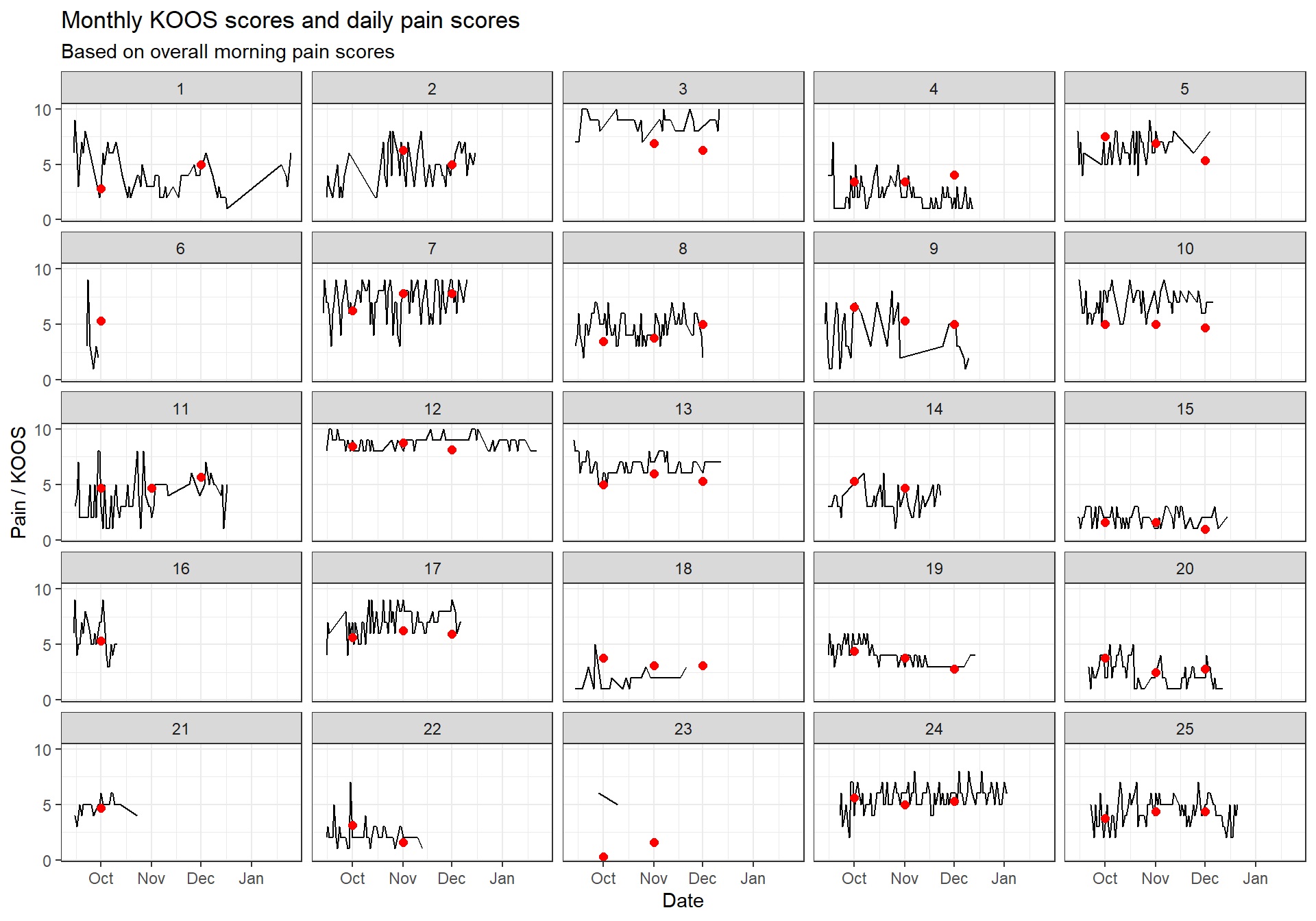Session Information
Session Type: Abstract Session
Session Time: 2:45PM-3:00PM
Background/Purpose: Pain is a cardinal symptom in people with knee osteoarthritis (OA). However, pain in knee OA is often infrequently measured both in clinical practice and research studies, meaning little is known about the day-to-day variability of it. Although physical activity is recognised to affect pain, it has been hard to measure both concurrently and study this relationship. In this study we aimed to assess the use of smartwatches to describe the day-to-day variability of pain and assess how this compares to the current standardised assessments of pain at less frequent time points. We also aimed to assess whether the use of a smartwatch can help us to explore the relationship between pain and physical activity levels in people with knee OA.
Methods: We performed a longitudinal, observational feasibility smartwatch study in participants with self-diagnosed knee OA over a three-month period. Participants were provided with a consumer cellular smartwatch with a bespoke app that collected patient-reported outcomes via questionnaires. The app triggered questions about daily level of knee pain twice a day and 17 questions from the Knee Injury and Osteoarthritis Outcome Score once a month. Physical activity was measured in the form of daily step counts.
Results: 26 participants were recruited; one left the study early and so was excluded from subsequent analyses. The mean age of participants was 65 years, with a standard deviation of 8 years, 13 were male and the median (IQR) BMI was 27 (25, 35) kg/m2.
The use of the consumer cellular smartwatch app was successful in assessing and recording data on patient reported outcomes and continuous sensor data simultaneously. We found that pain in knee OA fell into three main categories (sustained high levels of pain, sustained low levels of pain and fluctuating pain) but there was considerable day-to-day variation in pain levels within these categories. Furthermore, as illustrated in Figure 1, we also found that participants with stable monthly KOOS scores had a lot of day-to-day variability in pain levels in between their monthly scores, raising doubt as to whether patients with stable monthly KOOS scores truly represent stable knee OA and whether this is an accurate method for monitoring OA. Interestingly, we also found that those with high/ low levels of pain have a similar step count average but those with fluctuating pain have much lower levels of activity. This may indicate that fluctuating pain (i.e., pain that is unpredictable/ always changing) may be more troublesome to knee OA patients than those with consistently high levels of pain.
Conclusion: This study provides important insights related to the day-to-day variability of pain in knee OA and its links to physical activity. The results from this can help us start to understand pain in people with knee OA. In the future, larger studies may inform the development of personalized physical activity recommendations for people with knee OA, based on their optimal level of physical activity in relation to their pain.
To cite this abstract in AMA style:
Vivekanantham A, Selby D, Lunt M, O’Neill T, Dixon W. The Day-to-day Variability of Pain and the Relationship with Physical Activity in People with Knee Osteoarthritis: A Longitudinal, Observational Feasibility Study [abstract]. Arthritis Rheumatol. 2021; 73 (suppl 9). https://acrabstracts.org/abstract/the-day-to-day-variability-of-pain-and-the-relationship-with-physical-activity-in-people-with-knee-osteoarthritis-a-longitudinal-observational-feasibility-study/. Accessed .« Back to ACR Convergence 2021
ACR Meeting Abstracts - https://acrabstracts.org/abstract/the-day-to-day-variability-of-pain-and-the-relationship-with-physical-activity-in-people-with-knee-osteoarthritis-a-longitudinal-observational-feasibility-study/

